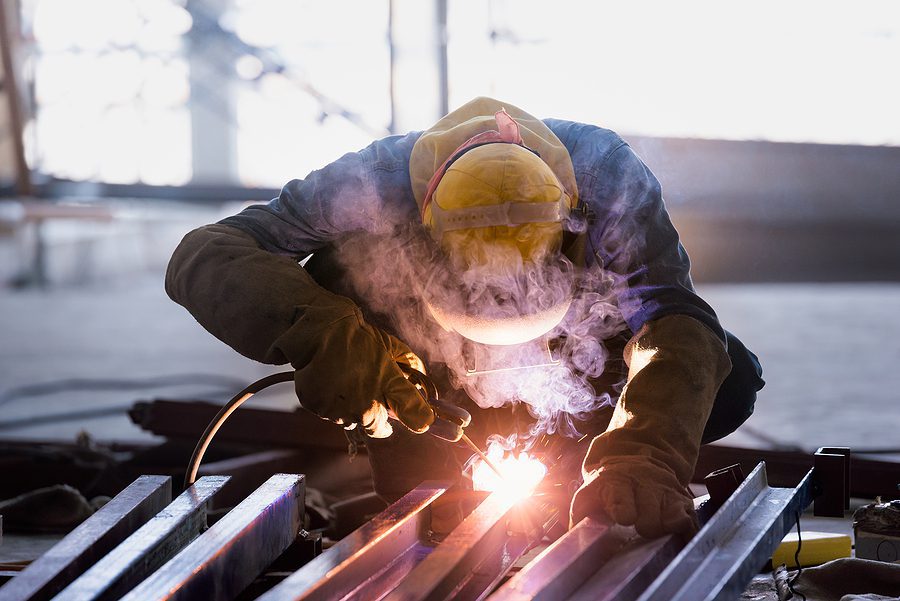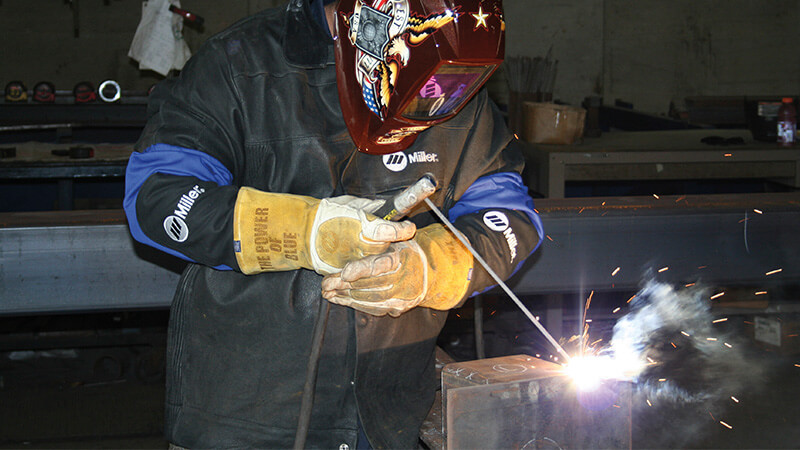All Concerning Welding: Key Insights Into Techniques and Finest Practices for Success
Welding includes a range of methods, each suited for particular products and applications. Recognizing these methods, such as GMAW, SMAW, and TIG, is important for achieving optimal outcomes. Moreover, the right devices and safety and security methods can not be ignored. As preparation and troubleshooting play essential duties in the welding procedure, grasping these elements can greatly enhance the quality of the last item. What are the vital elements that ensure a successful weld?
Comprehending Different Welding Techniques
Welding strategies encompass a range of approaches, each fit to details applications and products. Among one of the most common techniques are Gas Metal Arc Welding (GMAW), Shielded Steel Arc Welding (SMAW), and Tungsten Inert Gas Welding (TIG) GMAW, likewise called MIG welding, is preferred for its speed and adaptability, making it excellent for thin materials. SMAW, or stick welding, is preferred for its simpleness and efficiency in outdoor settings, especially with thicker steels. TIG welding uses precision and control, making it appropriate for elaborate work and non-ferrous metals (Montana Mobile Welding and Repair Belgrade Welding). Each technique has its unique benefits and factors to consider, enabling welders to pick the very best method based on the job's demands, material type, and desired outcomes. Understanding these methods is vital for effective welding
Vital Welding Tools and Devices
While numerous welding techniques need certain abilities, the best devices and tools are equally essential for achieving quality results. Crucial welding equipment consists of welding makers, which differ depending on the strategy-- such as MIG, TIG, or stick welding. Protective gear, including safety helmets, aprons, and gloves, guarantees security and comfort during the procedure. On top of that, components and clamps assist safeguard products in position, ensuring accuracy in welds. Consumables like welding rods, wire, and protecting gas are additionally critical elements that influence the high quality of the weld. In addition, devices such as grinders and cutters help with surface prep work and post-weld ending up, contributing to a professional result. Purchasing high-quality devices ultimately improves the effectiveness and efficiency of welding jobs.
Safety Practices in Welding
Proper security practices are important in the welding industry to shield employees from prospective hazards. Welders have to put on appropriate individual safety tools (PPE), including safety helmets with appropriate shading, gloves, and flame-resistant apparel. Sufficient ventilation is vital to lower exposure to harmful fumes and gases created during the welding procedure. Furthermore, workers ought to be learnt the right handling of welding equipment to avoid crashes. Fire precaution, such as maintaining combustible products far from the welding location and having fire extinguishers readily available, are required. Regular evaluations of equipment and workspaces can help determine potential risks before they cause crashes. By sticking to these safety and security techniques, welders can produce a much safer working atmosphere and lessen threats related to their profession.
Preparing Products for Welding
Preparing products for welding is an important step that considerably affects the top quality and integrity of the end product (Montana Mobile Welding and Repair Belgrade Welding). Proper prep work entails cleaning the surfaces to eliminate contaminants such as dirt, rust, and oil, which can jeopardize the weld. Methods such as grinding, fining sand, or making use of solvents are frequently employed to accomplish a clean surface area. Furthermore, making sure that the products mesh comfortably is necessary; spaces can result in weak welds. It's likewise crucial to take into consideration the positioning and positioning of the components, as this will influence the convenience of welding and the last outcome. Choosing the proper filler material and making sure compatibility with the base steels is important for attaining strong, durable welds.
Tips for Getting High-Quality Welds
Attaining premium welds needs focus to detail and adherence to finest techniques throughout the welding process. Proper joint prep work is necessary, making certain surface areas are free and clean from pollutants. Picking the proper filler product and welding technique based on the base steels is important for ideal bonding. Keeping consistent travel speed and angle while welding can prevent defects and advertise harmony. Furthermore, managing warmth input is essential; too much warm can bring about warping and deteriorated joints. Consistently inspecting the welds during the process enables immediate adjustments if necessary. Finally, employing appropriate post-weld therapies, such as cleansing and anxiety alleviation, can improve the durability and honesty of the weld, inevitably guaranteeing a successful end result.
Fixing Usual Welding Issues
Welding commonly offers obstacles that can impact the high quality and stability of the last item. Common problems such as porosity, inconsistent weld grains, and overheating can occur, each calling for certain troubleshooting strategies. Understanding these problems is vital for welders to enhance their skills and achieve perfect results.
Porosity Problems Explained
Porosity can frequently be overlooked, it stays a critical concern in welding that can endanger the stability of an ended up product. Porosity refers to the visibility of little gas pockets within the weld bead, which can lead and damage the joint to early failure. This trouble normally occurs from impurities, moisture, or incorrect securing gas protection during the welding procedure. To mitigate porosity, welders should verify that the base products are completely dry and clean, use ideal protecting gases, and keep regular welding parameters. Consistently evaluating the equipment and environment can also assist recognize possible concerns prior to they manifest in the weld. Attending to porosity successfully is essential for achieving strong, sturdy welds that fulfill high quality standards.

Irregular Weld Beads
Irregular weld beads can substantially influence the quality and stamina of a completed item. Numerous factors add to this issue, including inappropriate travel speed, incorrect amperage setups, and inconsistent electrode angles. When the welder relocates as well promptly, a bead may appear slim and lack penetration, while relocating as well gradually can cause excessive accumulation. In addition, utilizing the incorrect amperage can cause either undercutting or too much spatter, both of which concession weld integrity. The welder's strategy, such as irregular lantern motion, can also cause irregular bead appearance. To reduce these issues, welders must concentrate on keeping consistent, regulated movements and ensuring proper devices setups to attain uniformity in their welds. Consistency is essential to achieving trustworthy and solid welds.
Getting Too Hot and Warping Issues
Too much heat during the welding procedure can result in significant getting too hot and warping problems, influencing the structural integrity of the workpiece. These issues typically manifest as distortion, which can jeopardize placement and fit-up, making additional assembly challenging. Elements adding to overheating consist of the choice of welding Look At This parameters, such as voltage and travel rate, as well as the type of product being bonded. To mitigate these concerns, welders ought to maintain constant traveling rate and proper warm input while keeping track of the work surface temperature. Furthermore, pre-heating or post-weld warm treatment can help reduce tensions caused by quick cooling - Montana Mobile Welding and Repair Fabrication. Normal assessment and adherence to best techniques are essential in stopping overheating and making certain the longevity and integrity of welded structures
Often Asked Concerns
What Are the Job Opportunities in the Welding Sector?
The welding market provides diverse career possibilities, consisting of positions as welders, inspectors, designers, and educators. Professionals can operate in manufacturing, construction, aerospace, and automobile industries, taking advantage of strong demand and affordable salaries in numerous roles.
How Can I Boost My Welding Speed Without Giving Up Quality?
To enhance welding speed without compromising top quality, one ought to practice effective strategies, maintain equipment, optimize setups, and improve hand-eye control. Routine training and seeking feedback can also significantly add to achieving quicker, premium welds.
What Certifications Are Available for Welders?
Numerous qualifications exist for welders, including those from the American Welding Society (AWS), the National Center for Construction Education and Research linked here (NCCER), and numerous industry-specific organizations. These credentials boost employability and demonstrate ability effectiveness.
Exactly How Does Welding Influence the Qualities of Metals?
Welding influences the residential or commercial properties of metals his explanation by changing their microstructure, which can cause modifications in toughness, ductility, and solidity. Warm input and air conditioning prices during the process considerably influence these product attributes.
Can I Bonded Dissimilar Metals With Each Other?
